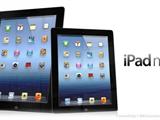CDs to Become History? Apple's Elimination of Optical Drives Nears Completion
The days of the optical drive are numbered, or it is emitting its death rattle. However, this is not happening in PC devices, but rather in Apple's Mac series.
Last week, Apple launched the MacBook Pro with Retina display and a new Mac Pro. At last week’s event, Apple did not upgrade the standard MacBook Pro line, which is currently the only Apple product that still features an optical drive.
In fact, Apple has eliminated the 15-inch MacBook Pro, reducing the non-Retina MacBook Pro lineup to just a single 13-inch model. Apple has historically used similar methods to trim its product lines, which usually indicates the imminent discontinuation of a product.
Everything started when the MacBook Air was introduced in 2008. This product removed the optical drive and multiple interfaces, reducing its thickness from one inch (in the MacBook Pro) to half an inch. However, the high price of the MacBook Air deterred many consumers who opted for Apple's slightly cheaper laptops instead. But as thinner, more powerful, and less expensive MacBook Air models were released, they eventually replaced Apple's plastic-bodied MacBook line, becoming Apple's entry-level laptop.
Looking back to 2008, Apple was taking a gamble. It wasn't until three years after the MacBook Air's release that Apple introduced the Mac App Store, providing software for laptops developed by Apple and other companies. Two years after the MacBook Air's launch, major third-party companies like Adobe and Microsoft began offering cloud subscription services. Even Netflix's streaming service, which now boasts over 40 million subscribers worldwide, was still in its early stages at the time.
Nevertheless, Apple implemented some interim solutions. For example, it added new features to the OS X operating system and released a set of components for PCs, allowing MacBook Air users to access optical drives running on other computers via Wi-Fi. Additionally, Apple introduced a standalone external optical drive priced at $79, as well as a USB recovery disk for Mac OS X. Later, Apple offered downloadable copies of OS X over the internet to replace the recovery disk.
However, Apple wasn't the first to remove the optical drive from its devices. Instead, Apple made this move at a time when many PC manufacturers were upgrading their DVD drives. For Apple, the revenue generated from selling movies and TV shows through iTunes was increasing, making the presence of an optical drive unnecessary.
Moreover, the battle between HD DVDs and Blu-rays didn't conclude until a month after the MacBook Air's launch in 2008. Some laptops equipped with these types of drives were bulky, required higher hardware specifications, and consequently were more expensive.
Therefore, the benefits of removing the optical drive seemed apparent. Without the optical drive, the MacBook Air became slimmer overall. Last year, Apple's new iMac could be considered a revolutionary innovation. By removing the optical drive and adopting new manufacturing processes, what was once a large box-like device became "slimmer," with edges as thin as 5mm, reducing its volume by up to 40% compared to the previous generation. Its edge thickness rivals that of the latest MacBook Air.
The same happened with the new Mac Pro. Apple claims that the new Mac Pro is 1/8th the size of the previous generation. The reduction in size isn’t solely due to the removal of the optical drive but also because Apple adjusted other components, such as replacing hard drives with flash storage. Apple also redesigned the cooling system, pulling airflow upward through bottom vents to absorb heat and expel it from the top. As with the first-generation MacBook Air, all of this came at a high cost. The new Mac Pro starts at $2,999, with the high-end configuration reaching $3,999.
The new Mac Pro demonstrates a direction Apple embarked on since 2008: providing future scalability in all new products. This isn't new in the computer industry, but it does impose some restrictions on Apple's path. For instance, FireWire 800 and ExpressCard interfaces typically only appear in higher-end products and are absent in consumer-grade devices.
However, this changed in 2011 when Apple started using Thunderbolt. Thunderbolt is a product co-developed by Apple and Intel, primarily used to connect PCs and other devices, combining PCI Express data transfer technology and DisplayPort display technology. Apple later developed a sister product using the Thunderbolt interface, the Thunderbolt Display LCD monitor. Now, the faster Thunderbolt 2 will begin to be applied to the Mac Pro and MacBook Pro. Thus, while the optical drive disappeared, Thunderbolt grew stronger within the Mac lineup, while PC manufacturers remain in the USB 3.0 era.
It turns out that removing the optical drive, though painful, resulted in reduced product sizes, indirectly aiding Apple. Smaller products and packaging allowed Apple to ship more units at once. For example, according to Bloomberg, the number of iPhones Apple can send in one shipment has increased by 60% compared to 2007. With air freight costing $242,000 per shipment, increasing the quantity shipped per trip makes a significant difference.
The next question for Apple is, which products can have their sizes further reduced? Products like the iPhone and iPad have shown that basic peripherals like keyboards or mice can be successfully recreated on a large screen. Perhaps Apple's computers will also experience a qualitative leap forward.



